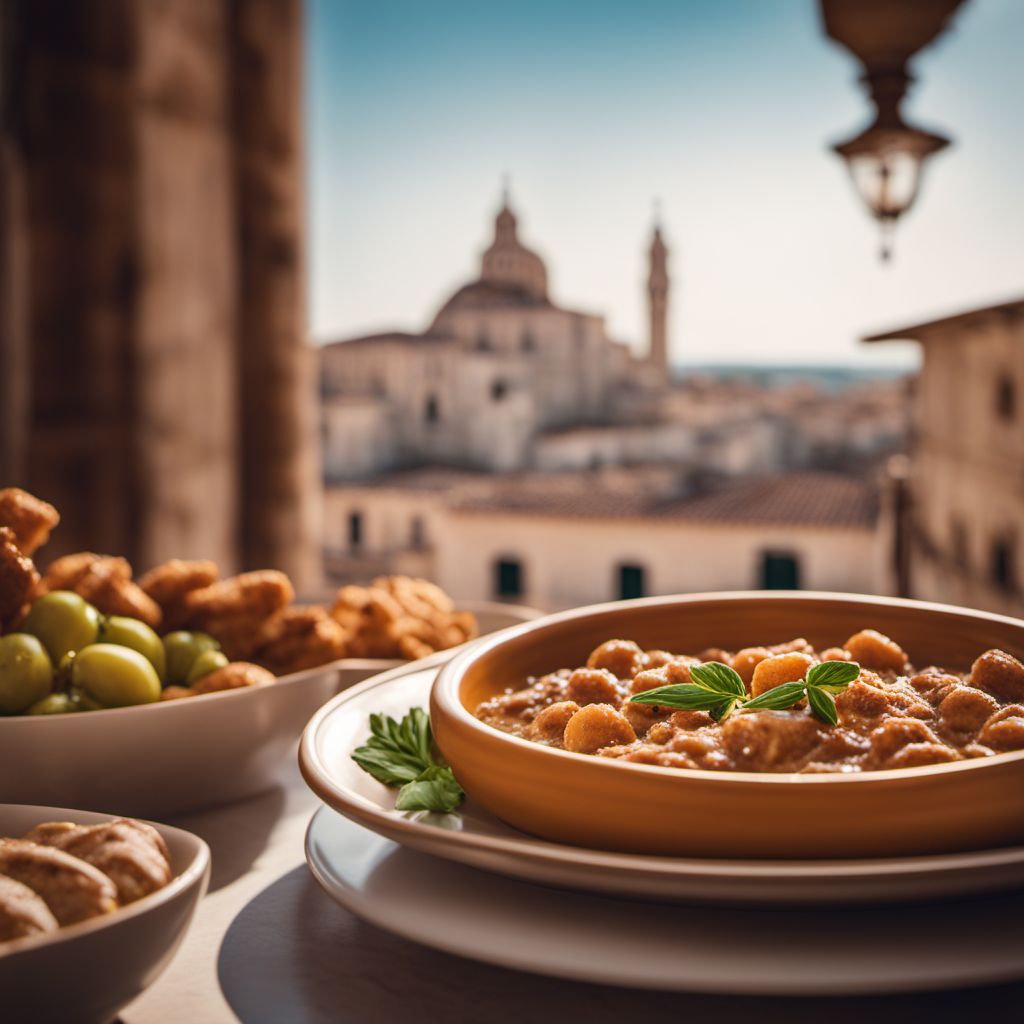
Cuisine
Apulian cuisine
Apulian cuisine is characterized by its use of fresh, local ingredients, such as tomatoes, olives, and seafood. The cuisine is also known for its simple, rustic flavors, which are achieved through the use of herbs, garlic, and olive oil. Apulian cuisine is also heavily influenced by the Mediterranean diet, which emphasizes fresh fruits and vegetables, whole grains, and lean proteins.
Typical ingredients
Tomatoes, Olives, Seafood, Garlic, Olive oil, Oregano, Basil, Eggplant, Zucchini, Pasta, Bread
Presentation and garnishing
Apulian cuisine is often presented in a simple and rustic manner, with dishes served family-style. Garnishes are typically minimal, with fresh herbs and a drizzle of olive oil being the most common.
Puglia is known as the "breadbasket" of Italy, and is famous for its production of olive oil and wine.
More cuisines from this region...
Sicilian cuisine, Venetian cuisine, Tuscan cuisine, Neapolitan cuisine, Sardinian cuisine, Lombard cuisine, Ligurian cuisine, Roman cuisine, Abruzzese and Molisan cuisine, Basilicatan (Lucanian) cuisine
History
Apulian cuisine has a long and rich history that dates back to ancient times. The cuisine has been influenced by a variety of cultures, including Greek, Roman, and Arab. The cuisine was also heavily influenced by the Spanish, who ruled Puglia for over two centuries. During this time, the Spanish introduced new ingredients and cooking techniques to the region, which helped to shape the cuisine into what it is today.
Cultural significance
Apulian cuisine is an important part of the cultural heritage of Puglia. The cuisine is deeply rooted in the traditions and customs of the region, and is an important part of the social fabric of the area. Apulian cuisine is also known for its association with the Mediterranean diet, which is considered one of the healthiest diets in the world.
Health benefits and considerations
The Mediterranean diet, which is the basis of Apulian cuisine, has been shown to have numerous health benefits, including reducing the risk of heart disease, stroke, and certain types of cancer. However, some traditional Apulian dishes can be high in fat and calories, so it is important to enjoy them in moderation.
Apulian cuisine recipes Browse all »
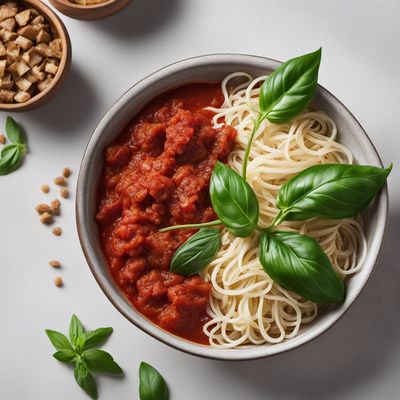
Moka alla Pugliese
Savor the Flavors of Apulia with Moka alla Pugliese

Apulian Casadinhos
Delizioso Apulian Casadinhos: A Marriage of Flavors

Civraxiu alla Pugliese
Savory Apulian Delight: Civraxiu alla Pugliese
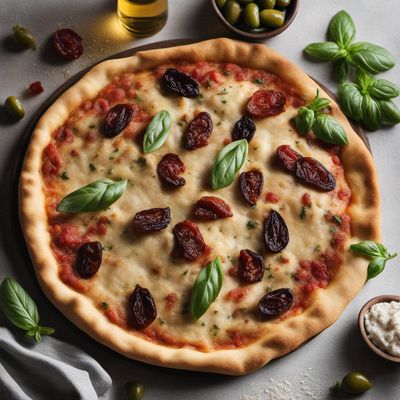
Apulian-style Stuffed Flatbread
Savor the Flavors of Apulia with Stuffed M'semen
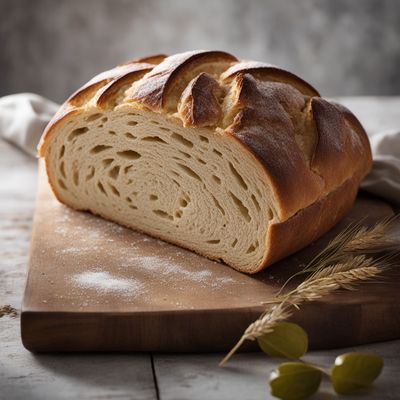
Apulian-style Rustic Bread
Rustic Delight: Apulian-style Bread with a French Twist
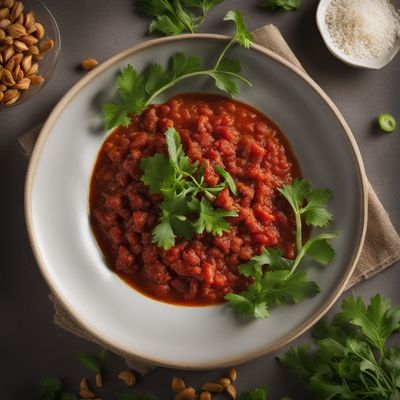
Apulian Sedano alla Pratese
Apulian Celery Delight

Apulian Sfogliatella
Delizie Pugliesi - Apulian Delights

Apulian-style Pollo e Ricotta Crocchette
Delizie di Pollo e Ricotta alla Pugliese (Delights of Chicken and Ricotta, Apulian Style)
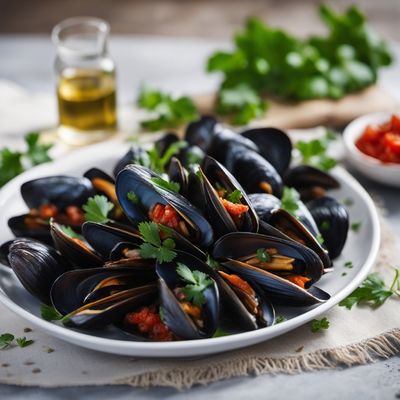
Apulian-style Moules à la Marinière
Mediterranean Delight: Apulian-style Mussels in White Wine Sauce
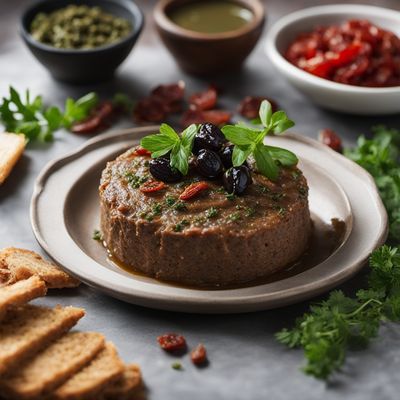
Apulian-style Pâté
Savor the Flavors of Apulia with this Delectable Pâté
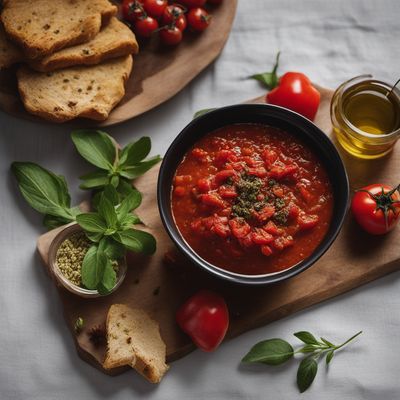
Ginger and Tomato Chutney
Zesty Tomato and Ginger Chutney: A Burst of Flavors from Apulia

Apulian-style Cinnamon Rolls
Delizie Pugliesi: Apulian-inspired Cinnamon Rolls